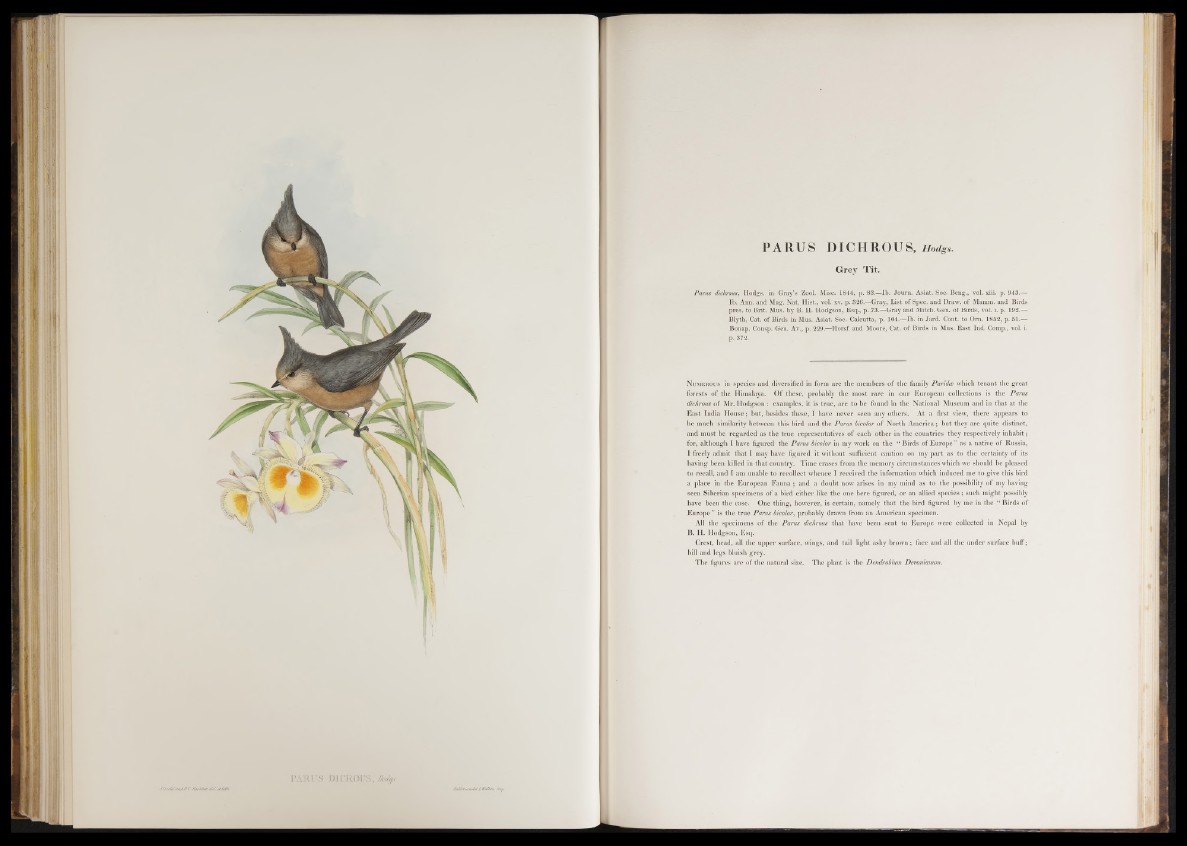
P A R U S D I C H R O U S , Hodgs.
Grey Tit.
Pams dichrous, Hodgs. in Gray’s Zool. Misc. 1844, p. 83.—lb. Joum. Asiat. Soc. Beng., vol. xiii. p. 943.—
lb. Ann, and Mag. Nat. Hist., vol. xv. p. 326.—Gray, List of Spec, and Draw, of Mamm. and Birds
pres, to Brit. Mus. by B. H. Hodgson, Esq., p. 73.—Gray and Mitch. Gen. of Birds, vol. i. p. 192.—
Blyth, Cat. of Birds in Mus. Asiat. Soc. Calcutta, p. 104.—lb. in Jard. Cont. to Orn. 1852, p. 51.—
Bonap. Consp. Gen. Av., p. 229.—Horsf. and Moore, Cat. of Birds in Mus. East Ind. Comp., vol. i.
p. 372.
N um ero us in species and diversified in form are the members of the family Pandas which tenant the great
forests of the Himalaya. Of these, probably the most rare in our European collections is the Pams
dichrous of Mr. H odgson : examples, it is true, are to be found in the National Museum and in that at the
East India Ho u se; but, besides these, I have never seen any others. At a first view, there appears to
be much similarity between this bird and the Parus bicolor of North America; but they are quite distinct,
and must be regarded as the true representatives of each other in the countries they respectively inhabit;
for, although I have figured the Parus bicolor in my work on the “ Birds of Europe” as a native of Russia,
I freely admit that I may have figured it without sufficient caution on my p art as to the certainty of its
having been killed in that country. Time erases from the memory circumstances which we should be pleased
to recall, and I am unable to recollect whence I received the information which induced me to give this bird
a place in the European F a u n a ; and a doubt now arises in my mind as to the possibility of my having
seen Siberian specimens of a bird either like the one here figured, or an allied species; such might possibly
have been the case. One thing, however, is certain, namely that the bird figured by me in the “ Birds of
Europe ” is the true Parus bicolor, probably drawn from an American specimen.
All the specimens of the Pams dichrous that have been .sent to Europe were collected in Nepal by
B. H. Hodgson, Esq.
Crest, head, all the upper surface, wings, and tail light ashy brown; face and all the under surface buff;
bill and legs bluish grey.
The figures are of the natural size. The plant is the Dendrobium Devonianum.